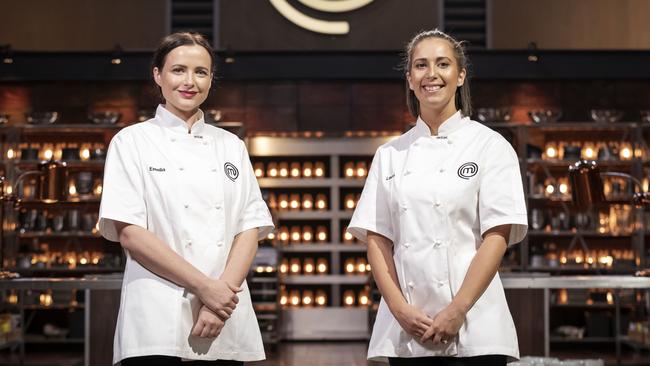Australian TV ratings: Outdated and underrated
Australia’s TV ratings system is no longer an accurate reflection of when we are watching and needs to change, say industry experts.
TV
Don't miss out on the headlines from TV. Followed categories will be added to My News.
Every morning like clockwork after Channel Seven’s mini-golf-on-steroids production Holey Moley airs, Australian television commentators furiously start tapping out their narratives of how poorly the show has performed. As has been the case for many years, the source for these dire appraisals is the daily overnight ratings report — a detailed breakdown of how many people watch any given program from the previous day provided by OzTAM.
Despite being an unpleasant read for those involved in the show, there is no hidden agenda in the stories, it’s just the way the industry has worked for decades and the hope is that there are as many wins as there are losses.
But the problem in this method is that as the television business across the globe has undergone significant upheaval over the past 10-15 years and the way in which we judge the success of a program’s success hasn’t kept up.

A decade ago, it was commonplace for shows to have numbers approaching two million across Sydney, Melbourne, Brisbane, Adelaide and Perth. Now it’s big news when the million mark is cracked — something that only happened one day this week. An episode of Nine’s trashy reality juggernaut Married At First just scraped over the line with 1.02 million viewers across those five capital cities. During a similar period in 2011, it was nothing out of the ordinary for the top dozen shows in the list to record more than a million. In the corresponding week a decade ago, Packed To The Rafters drew upwards of 1.7m viewers.
But a lot has changed since 2011.
The free-to-air networks all have several multi-channels and most significantly they have catch-up television services that allow people to watch shows outside of the broadcast slots. And of course this period has seen the advent of streaming TV in Australia with the introduction of Netflix in 2015, followed by the likes of Amazon Prime, Stan and most recently Binge.
“It’s worth acknowledging (that) 10 years ago, our industry went through an absolutely massive change — obviously technology-led,” Seven’s director of content scheduling Brook Hall told Saturday Extra.
“There used to be a few free-to-air networks and a cable company competing for viewer eyeballs. It’s now a very different landscape.
This broadening of choice has taken some of the audience away from the big networks, but Hall said the numbers in those daily reports aren’t a reflection of that but of the differing ways in which the company’s shows are consumed.
“There has been some slight fall of total viewership in certain slots because the competition is just so hard,” he said. “But we’ve got to add the other pieces of the puzzle, the way people are consuming it — streaming, time shifting it.”

Channel 10’s chief sales officer Rod Prosser agrees and goes further, saying the publication of those early figures — and the construction of a defining story around them — can be “misleading” to readers as it doesn’t capture the true results of a particular show.
“The overnight ratings that come through on a daily basis are one component of a much bigger picture and, frankly, my belief is that it’s almost archaic, and somewhat misleading to only focus on that one component,” he said. “The consumption of a show will dramatically change as the week goes on and indeed after we’ve got the full seven-day picture.”
Channel 10’s audience traditionally skews younger than the other networks and some of its shows can receive a boost of more than 30 per cent when looking at the week-long figures.
Seven’s Hall admits they are a little disappointed with the overall figures of Holey Moley. He suggests that magic million mark — across all viewing categories — is the unofficial benchmark for success of a show and it has fallen just short.

But the final figures are far from the numbers that are used to shout its failure by some critics. Looking just at those numbers for the show last week it would appear the audience was between 300,000 and 400,000. But the average after adding in regional, catch-up and recorded viewings was just over 850,000.
The very publication of the overnight figures is a large part of the problem and Hall said the industry has to work hard to change the mindset of a system that has been around since before streaming was even an idea.
“We’ve kind of got to do a better job as an industry really to (ask): ‘why do we put out a number 12 hours after it’s launched and judge it when we know that people consume in such a different way’,” he says.
Media Week editor and commentator James Manning agrees the system has passed its used-by date, but said with the fragmentation of the market and the introduction of streaming platforms, there’s no denying the numbers of people watching free-to-air has reduced from a decade ago.
“We’re still trying to work out how many people are watching TV by an old system but even counting, every extra viewer, the numbers are going to be still down significantly, say on that 10-year comparison,” he said.
“There’s probably as many people watching TV, but they’re not watching the smaller number of programmes that were on offer that were easily measurable a decade ago. That viewing is now spread so far.”



